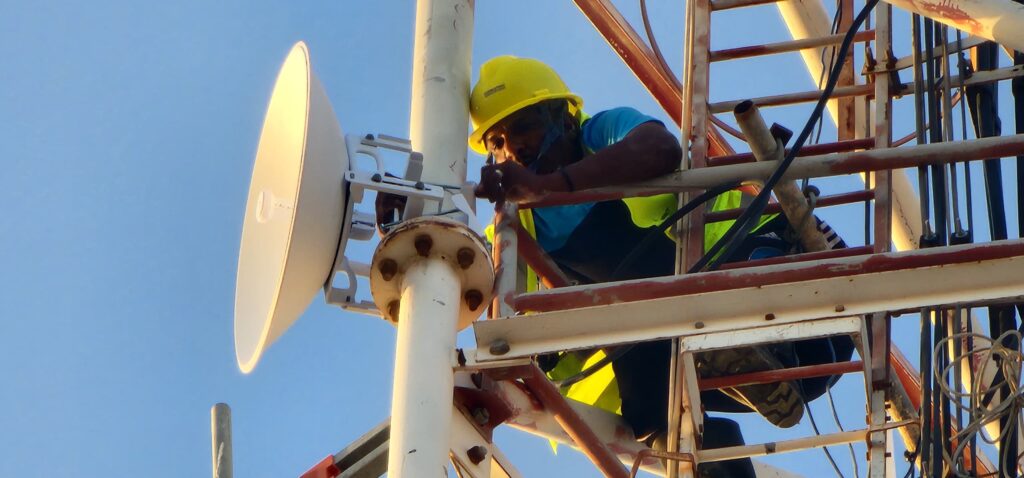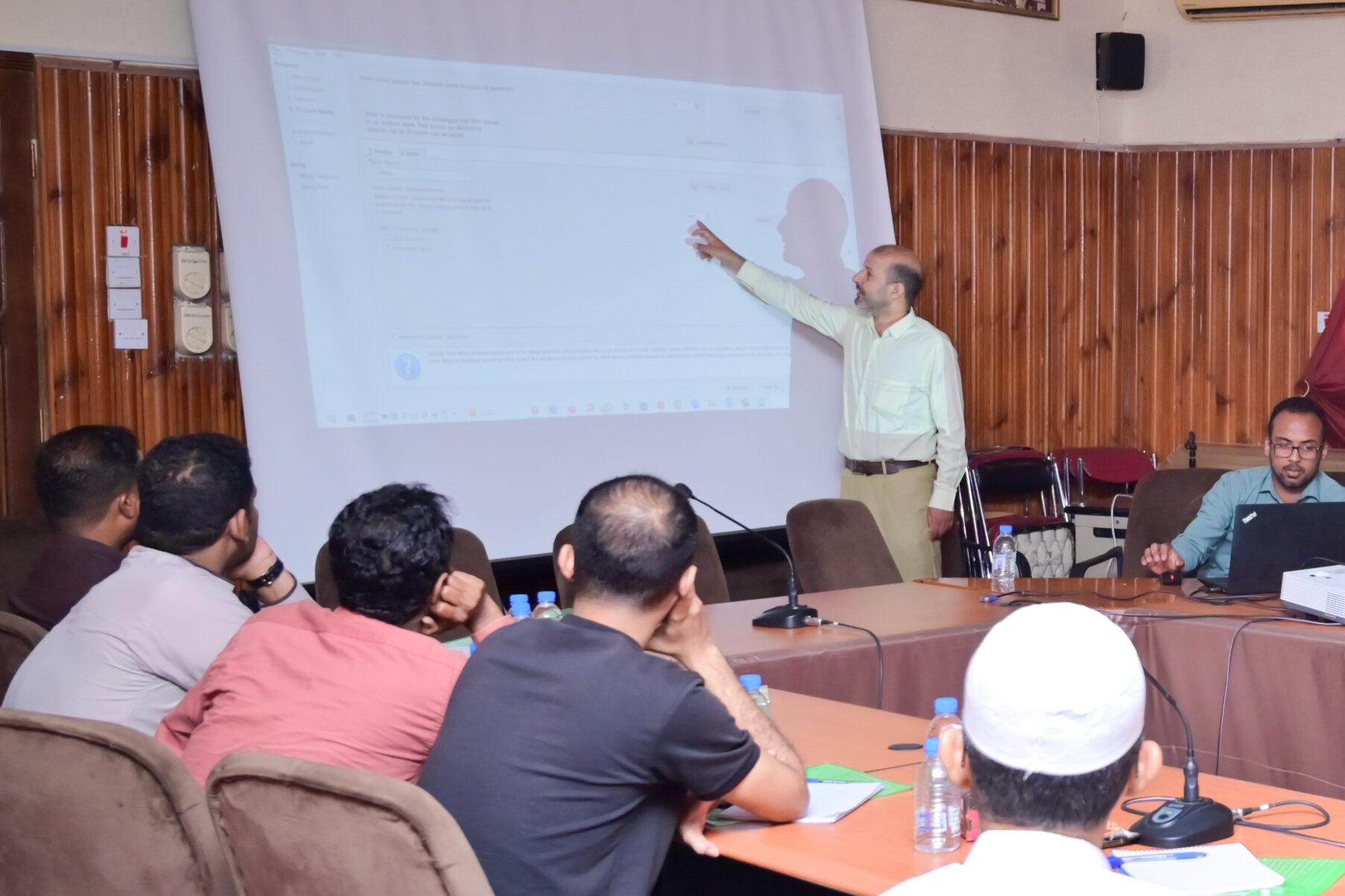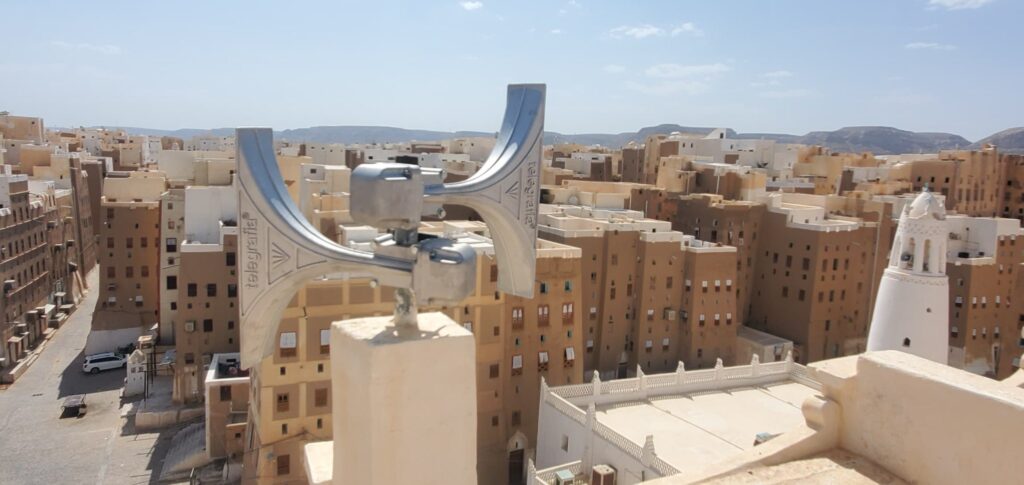Shibam Flood Early Warning System (FEWS)
Protecting lives, infrastructure, and cultural heritage in Hadramout
In the historic city of Shibam—often called the “Manhattan of the Desert”—seasonal flash floods pose a recurring threat to residents, infrastructure, and UNESCO‑recognized cultural heritage. Our Shibam Flood Early Warning System (FEWS) initiative was designed and implemented to translate risk data into timely, actionable alerts that enable earlier, safer decisions.

Objectives
- Reduce loss of life and damage from flash floods through anticipatory action.
- Safeguard critical infrastructure and irreplaceable cultural assets.
- Strengthen local institutional capacity for risk monitoring, preparedness, and response.
- Establish a sustainable, locally owned early warning capability aligned with national systems.
Scope and Stakeholders
- Geography: Shibam city and upstream catchment areas in Hadramout.
- Beneficiaries: Municipal authorities, civil defense, cultural heritage custodians, and local communities.
- Partners: Local government agencies, community committees, and technical vendors.
- Donor alignment: Designed to meet international funder requirements on MEL, safeguards, and transparency.
What We Delivered
- Hazard and vulnerability assessment
- Historical flood records and hydrologic modeling to determine thresholds and priority zones.
- Exposure mapping for residential clusters, access roads, and heritage structures.
- Sensing and data infrastructure
- Deployment of hydromet sensors (rain gauges, stream level) at strategic upstream and urban points.
- Low-power telemetry for reliable data transmission under constrained connectivity.
- Analytics and thresholds
- Calibrated flood triggers based on geomorphology and catchment behavior.
- Real-time data processing with alert logic tuned to false‑positive/false‑negative trade-offs.
- Alerting and protocols
- Multi-channel notifications (sirens, SMS, radio, control room dashboards).
- Standard Operating Procedures (SOPs) for preparedness, pre‑positioning, evacuation, and all‑clear.
- Capacity building and localization
- Training for municipal operators, civil defense, and community focal points.
- Documentation, O&M playbooks, and spare-parts strategies for durable handover.
- Governance and integration
- Clear roles, decision rights, and escalation paths across agencies.
- Interoperability with existing government systems and risk communication channels.
Implementation Approach

- Phased delivery with validation gates
- Discover: Baseline diagnostics, site selection, and stakeholder mapping.
- Pilot: Limited deployment to validate thresholds and communications efficacy.
- Scale: Network expansion, SOP activation, and community drills.
- Sustain: O&M models, periodic audits, and continuous improvement loops.
- Risk and safeguards management
- Proportionate environmental and social safeguards.
- Data governance and privacy controls for citizen alerting.
- MEL and adaptive management
- KPIs tracking lead time of alerts, alert reach, response adherence, and post-event impact.
- After-action reviews following events and exercises to refine thresholds and SOPs.
Results and Early Outcomes
- Increased lead time for responders and households to take protective action.
- Higher alert reach and comprehension through localized messaging and trusted channels.
- Reduced damage in at-risk zones during subsequent high‑rainfall events compared to historical baselines.
- Strengthened municipal capacity to operate, maintain, and improve the system without external dependency.
What Made It Work

- Context-first engineering
- Fit-for-purpose hardware and power solutions, serviceable locally.
- Co-ownership from the start
- Participatory design with authorities and communities to ensure adoption.
- Heritage-sensitive planning
- Routing, siting, and protocols developed to protect cultural assets while prioritizing life safety.
- Transparent delivery
- Donor-compliant reporting, QA/QC, and independent technical reviews.
Sustainability and Handover
- Local O&M arrangements, budget envelopes, and vendor SLAs established.
- Annual calibration schedule and incident-driven re-calibration protocol.
- Knowledge transfer completed with documented SOPs, training records, and asset registers.
At a Glance

- Domain: Disaster Risk Reduction / Climate Resilience
- Components: Hydromet sensing, data telemetry, analytics, thresholds, multi-channel alerting, SOPs, training
- Beneficiaries: City authorities, first responders, communities, cultural heritage custodians
- Value: Earlier action, reduced impacts, local capacity, and long-term system sustainability
If you’re funding climate resilience or risk reduction in heritage-rich or high-risk geographies, the Shibam FEWS illustrates how targeted technology, robust governance, and local capacity building combine to protect lives and legacy—sustainably.
